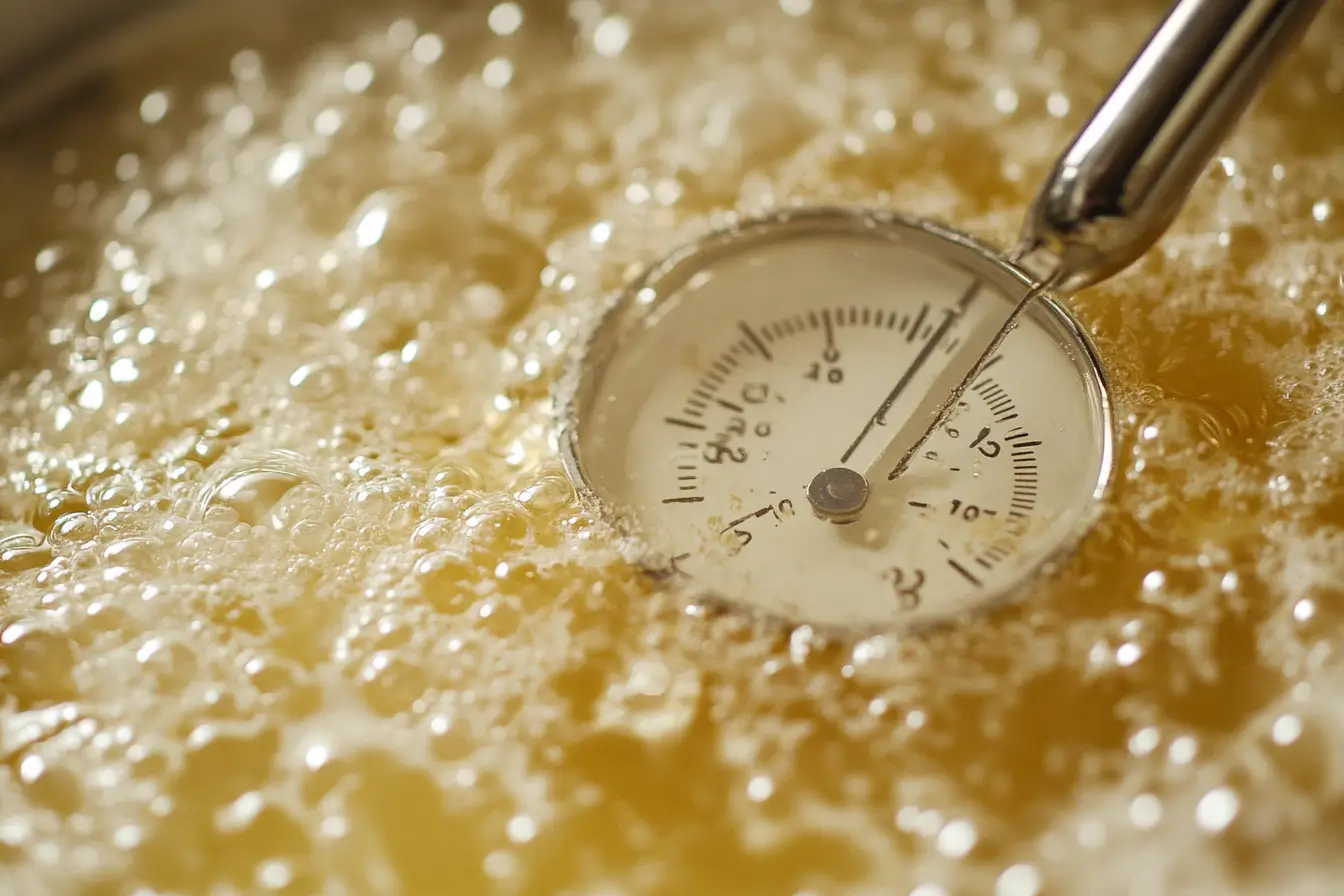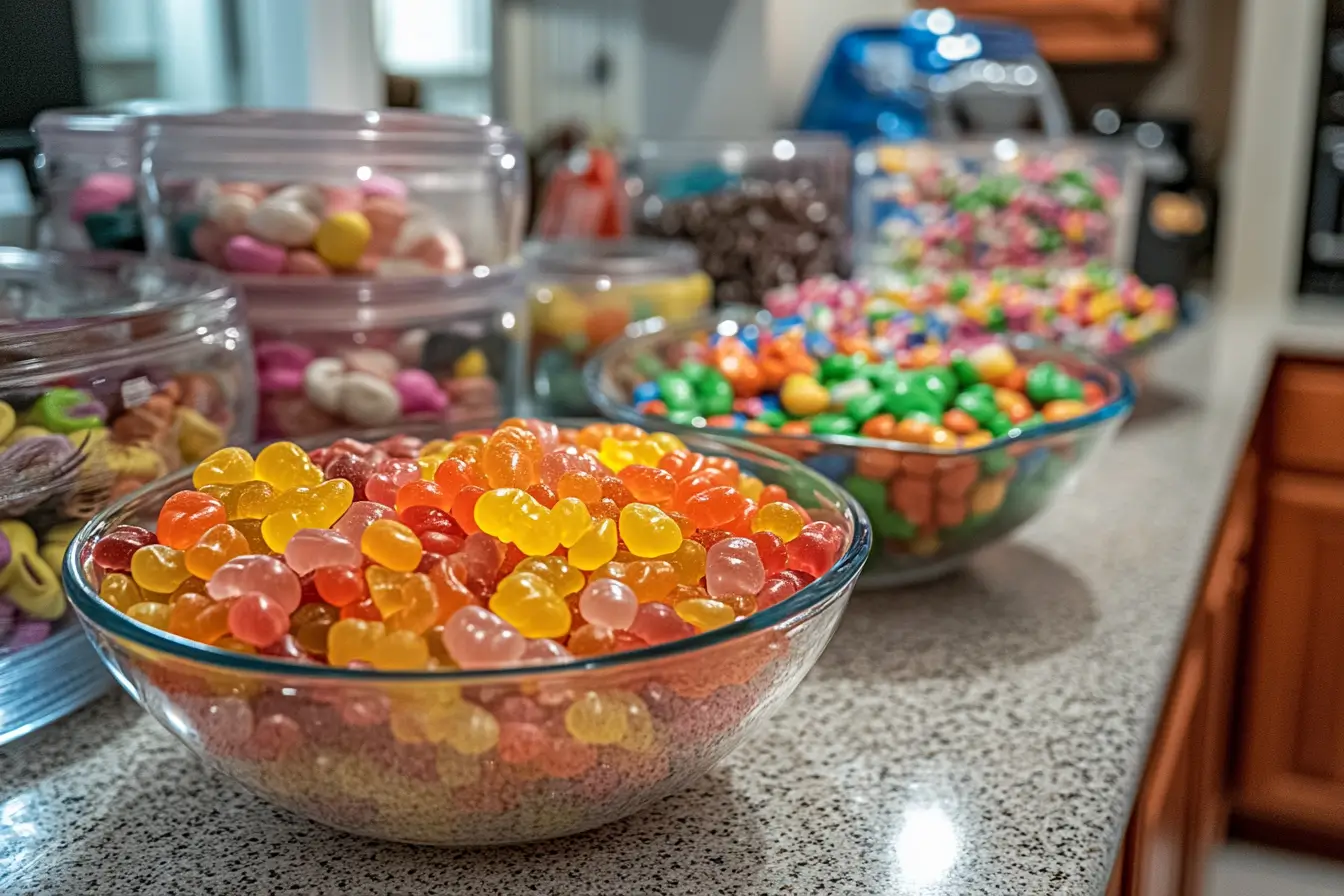Alright, candy lovers, let’s have a chat. You’ve just spent time carefully measuring, stirring, and waiting for that sweet, sugary masterpiece to come to life. But instead of the soft, chewy treat you dreamed of, you’re holding a jawbreaker (literally). What gives? Why is your candy so hard? Don’t worry—I’ve been there too, and we’re going to figure this out together.
The Science of Candy: What’s Going On?
Candy-making isn’t just mixing sugar and calling it a day; it’s basically kitchen chemistry. The texture of your candy depends on the sugar’s temperature during cooking. When you heat sugar, the water evaporates, and the sugar crystals transform into something magical. But here’s the kicker: the temperature decides whether your candy is soft, chewy, or hard as a rock.
Check out this quick sugar stage breakdown:
- Soft Ball Stage (235°F–245°F): Think fudge or caramels—soft and pliable.
- Firm Ball Stage (245°F–250°F): For chewy goodies like nougat.
- Hard Ball Stage (250°F–265°F): Candy canes and toffee land here.
- Hard Crack Stage (295°F–310°F): This is lollipop and brittle territory.
If your sweeten is too hard, chances are you cooked it to a higher stage than intended. But wait, there’s more to it than just numbers.
Common Reasons Your Candy Is Too Hard
Let’s break this down into bite-sized pieces, shall we?
1. Temperature Mishaps
This is the big one. If your candy thermometer is off or you’re eyeballing it, things can get tricky. Even a few degrees too high can push your sweeten into the “crack your teeth” zone.
Quick Fix: Invest in a reliable candy thermometer. Seriously, it’s a game-changer. If you’re already using one, calibrate it by testing in boiling water—it should read 212°F.
2. Overcooking the Syrup
Maybe you got distracted scrolling on your phone (we’ve all been there) or got nervous and let the sugar cook a little too long. Overcooking removes too much moisture, making your sweeten harder than you wanted.
Quick Fix: Set a timer and stay focused! I like to keep all my ingredients prepped ahead of time so I’m not scrambling mid-recipe.
3. Humidity Drama
Yep, even the weather can mess with your sweeten. If you’re cooking on a humid day, the extra moisture in the air can affect the cooking process, causing unpredictable results.
Quick Fix: Avoid making sweeten on super humid days, or use a dehumidifier in your kitchen.
4. Recipe Ratio Issues
Candy recipes are super precise for a reason. A little too much sugar or too little liquid can throw off the texture completely.
Quick Fix: Double-check your measurements before you start. This isn’t the time to eyeball things like you’re seasoning soup.
How to Soften Hard Candy
Okay, so your sweeten came out rock-hard. Can it be saved? Maybe! Here are a few tricks to try:
- Add Heat: Pop it in the microwave for 5–10 seconds to soften it slightly. This works for individual pieces but isn’t ideal for the whole batch.
- Steam It: Place the sweeten in a bowl over simmering water (double boiler-style) to gently soften it.
- Repurpose It: Crush hard candy into bits and use it as a topping for ice cream, yogurt, or baked goods. Sometimes, you just gotta roll with it.
For more creative ideas, explore this comprehensive guide on enhancing your cornflake candy.
Pro Tips for Perfect Candy Every Time
- Always Use a sweeten Thermometer
I know I said it before, but I’ll say it again. Precision is key, and a thermometer takes out the guesswork. - Prep Like a Pro
Measure everything out before you start. sweeten-making moves fast, and you don’t want to scramble to grab ingredients while your sugar burns. - Don’t Stir Too Much
Stirring sugar syrup at the wrong time can cause crystallization (read: gritty candy). Follow your recipe carefully when it comes to stirring instructions. - Test Your Syrup
If you’re unsure about the thermometer reading, do the old-school test: Drop a bit of syrup into cold water to see how it behaves. Does it form a soft ball or a hard crack? That’s your stage.
Discover even more storage and preparation hacks in our ultimate candy-making tips.
The Role of Cooling in Candy Hardness

Here’s a sneaky factor that many people overlook: how you cool your sweeten can make a big difference in its final texture. If you pour your sweeten onto a surface that’s too cold, like a chilled marble slab, it might harden faster than intended. That quick cooling locks in the hardness, making it tougher to manage later.
What to Do Instead: Use a room-temperature surface, like a silicone baking mat or a regular countertop, to cool your sweeten gradually. This gives it time to settle into the right texture without seizing up too fast.
Does Stirring Really Matter?
Oh, it matters! Stirring is one of those small steps that can make or break your batch. Too much stirring can cause crystallization, which leads to a gritty texture. Not enough stirring, on the other hand, can result in uneven cooking. If your sweetenis unexpectedly hard, ask yourself—did you overdo it with the whisk?
Pro Tip: Stir only as much as the recipe suggests. Some candies require gentle, periodic stirring, while others need you to keep the spoon far, far away.
Hard sweeten Storage: Are You Doing It Right?
Let’s talk storage, because even if you nail the cooking process, how you store your sweeten can make it harder than it’s supposed to be. Leaving it out in the open air is like asking for trouble—humidity and temperature swings can mess with the texture.
Fix This: Always store sweeten in an airtight container. For extra protection, add a small packet of silica gel (those little packs you find in shoe boxes—just don’t eat them!). If you want your candy to stay at its best, keep it in a cool, dry place away from direct sunlight.
The Tools That Make Candy-Making Easier
Okay, let’s be real. sweeten-making can feel intimidating without the right tools. Beyond the trusty candy thermometer, here are a few other gadgets that can help you get that perfect consistency:
- Silicone Spatula: Great for scraping every last bit of sweeten from your pot.
- Marble Slab or Silicone Mats: Ideal for pouring out hot sweeten for cooling.
- Heavy-Bottomed Saucepan: Even heat distribution is crucial for preventing hotspots that lead to burning.
Using these tools not only makes the process smoother but also helps avoid common issues, like hard or burnt candy.
Why Is Humidity the Enemy of Candy?
I know I touched on humidity earlier, but it deserves a bit more attention. High humidity days are candy-making nightmares because sugar is hygroscopic (fancy word for “it loves water”). Even after you’ve cooked your sweeten to the perfect temperature, it can absorb moisture from the air and harden more than it should.
Best Practices:
- Check the weather before making candy. Seriously.
- Work in a climate-controlled kitchen if possible.
- Store your sweeten immediately after it cools—don’t leave it sitting out.
The Sweet Spot: Perfecting Your Technique
When all else fails, practice really does make perfect. Candy-making is one of those crafts that rewards patience and attention to detail. If your candy is consistently too hard, keep a journal of what you did for each batch. Jot down things like the cooking time, temperature, and even the weather that day. Over time, you’ll start to notice patterns—and you’ll know exactly how to troubleshoot.
Ingredients Matter: Could They Be the Problem?
Sometimes, the culprit behind your overly hard candy isn’t the temperature or technique—it’s the ingredients themselves. Low-quality sugar, old corn syrup, or expired flavorings can mess with the chemical reactions during cooking, leading to unexpected textures. Even the type of water you use can play a role, especially if it has a high mineral content (hard water, anyone?).
How to Fix It:
- Always use fresh, high-quality ingredients.
- Stick to granulated white sugar unless the recipe specifies otherwise.
- If your water has a lot of minerals, consider using filtered or distilled water for candy-making.
Why Room Temperature Ingredients Are Key
This might sound like overkill, but using ingredients at the wrong temperature can also affect your candy’s texture. For example, adding cold butter or cream to hot syrup can cause the mixture to seize, leading to hard or uneven results.
Pro Tip: Let all your ingredients come to room temperature before starting. It only takes a few extra minutes and can save your candy from disaster.
The Role of Altitude in Candy-Making
Did you know that where you live can impact your candy’s texture? High altitudes cause water to boil at a lower temperature, which means your sugar mixture might reach the “hard” stages faster than expected. This can result in candy that’s harder than intended, even if you’re following the recipe to a T.
What to Do:
- Adjust your target temperature down by 2°F for every 1,000 feet above sea level.
- If you’re unsure, test your thermometer with boiling water—it should read 212°F at sea level but may be lower at higher altitudes.
FAQs:
Can I fix candy that’s already hardened too much?
A: It depends. You can’t undo the chemistry, but you can repurpose it (see above). If it’s a liquid-based candy, you might be able to reheat it and adjust the temperature.
Why does my candy get sticky instead of hard?
A: This is often a humidity issue or undercooking. Make sure to cook to the right temperature and store candy in an airtight container with a desiccant pack if needed.
Can I make candy without a thermometer?
A: Technically, yes, but it’s risky. If you’re experienced, the cold water test can work, but I still recommend a thermometer for consistency.
Why does my candy have a burnt taste?
A: Overcooking is the likely culprit. Sugar can burn quickly, so watch it closely and reduce heat if needed.
Fun Candy Hacks You’ll Love
- Homemade Candy Sprinkles: Crush hardened candy into fine pieces and sprinkle them on cupcakes or cookies. Instant pizzazz!
- Candy Cocktails: Use shards of hard candy as stir sticks for cocktails—fancy and tasty.
- Custom Shapes: While the candy is still warm and pliable, mold it into shapes using cookie cutters or your hands (careful, it’s hot!).
Conclusion
Making candy isn’t always a piece of cake—or, well, candy. But honestly, that’s part of the fun! Every batch teaches you something, and even the mistakes can lead to delicious experiments.
Next time your candy doesn’t come out the way you want, take a breath, grab a piece of that hard candy, and remember: You’re learning. And hey, if nothing else, you’ll have some killer ice cream toppings!
Got more candy questions or tips? Let me know in the comments—I’d love to help you out. Happy candy-making!


2 thoughts on “Why Is My Candy So Hard? Let’s Fix That Together!”